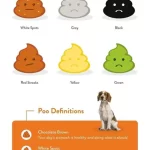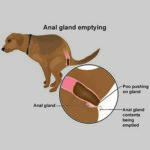Why Doesn’t My Dog Chew His Food
Why Fido Won’t Chew: Understanding Your Dog’s Eating Behavior
If you’re a dog owner, you may have noticed that your furry friend sometimes swallows his food without chewing it properly. This can be worrying and even dangerous, as it can lead to choking, digestive problems, or malnutrition. However, before you blame your dog for being lazy or stubborn, you should know that there are several reasons why dogs may not chew their food as much as humans do.
In this article, we’ll explore the possible causes of this behavior and give you some tips on how to encourage your dog to chew his food more thoroughly. We’ll also debunk some myths and misconceptions about dogs’ eating habits and explain why it’s important to pay attention to what and how your dog eats.
Subtitles:
– Dogs Are Not Humans: Understanding the Anatomy and Physiology of Canine Digestion
– Why Do Some Dogs Swallow Their Food Whole? Exploring the Instincts and Habits of Canis Lupus Familiaris
– From Picky Eaters to Scarfers: How Different Breeds and Personalities Affect Dogs’ Feeding Behaviors
– The Role of Diet, Health, and Environment in Promoting Healthy Eating Habits in Dogs
– Training Tips and Tricks for Teaching Your Dog to Chew His Food Properly
– Common Problems and Solutions for Dogs Who Refuse or Can’t Chew Their Food
Dogs Are Not Humans: Understanding the Anatomy and Physiology of Canine Digestion
To understand why dogs don’t always chew their food like we do, we need to look at their digestive system. Unlike humans, who have teeth designed for grinding and breaking down food before it enters the stomach, dogs have teeth that are adapted for tearing and cutting meat and bones. This means that they don’t need to chew their food as much as we do in order to digest it.
Moreover, dogs have a shorter digestive tract than humans, which means that their food spends less time in the mouth and esophagus and more time in the stomach and intestines. This also means that they rely more on stomach acids and enzymes to break down their food than on mechanical chewing.
Why Do Some Dogs Swallow Their Food Whole? Exploring the Instincts and Habits of Canis Lupus Familiaris
While dogs may not need to chew their food as much as we do, some dogs may still choose to swallow it whole or in large chunks. This behavior can be caused by various factors, such as:
– Hunger: If a dog is very hungry, he may eat too fast and not take the time to chew his food properly. This can lead to bloating, vomiting, or diarrhea.
– Competition: If there are multiple dogs in the household or if the dog perceives a threat to his food, he may try to eat as quickly as possible before someone else takes it away.
– Boredom: If a dog is left alone for long periods of time without toys or activities, he may resort to eating his food quickly just to pass the time.
– Anxiety: If a dog is stressed or anxious about something (such as separation from his owner), he may eat his food quickly as a coping mechanism.
From Picky Eaters to Scarfers: How Different Breeds and Personalities Affect Dogs’ Feeding Behaviors
In addition to these general factors, the breed and personality of your dog can also influence how he eats. For example:
– Small breeds: Smaller dogs tend to have smaller mouths and teeth, which can make it harder for them to chew larger pieces of food. They may also be more prone to dental problems that make chewing painful or uncomfortable.
– Large breeds: Larger dogs may have bigger appetites and stronger jaws, which can make them more likely to swallow their food whole or to chew it less thoroughly. They may also be more prone to bloat, a serious condition that can occur when the stomach twists and traps air and food.
– Picky eaters: Some dogs may be picky about their food and only eat certain types or brands. This can make them more likely to scarf down their preferred food without chewing it properly.
– Slow eaters: On the other hand, some dogs may take a long time to eat their food or even leave it untouched for hours. This can be a sign of dental problems, digestive issues, or just a lack of appetite.
The Role of Diet, Health, and Environment in Promoting Healthy Eating Habits in Dogs
While some aspects of your dog’s eating behavior may be innate or breed-specific, there are also many factors that you can control or influence as a dog owner. One of the most important is your dog’s diet. A balanced and nutritious diet that meets your dog’s individual needs can help him maintain a healthy weight, coat, and digestion. It can also reduce his risk of developing health problems that affect his eating habits.
For example, if your dog has dental problems (such as broken teeth or gum disease), he may find it difficult or painful to chew his food. In this case, you may need to switch to softer or wetter foods that require less chewing. If your dog has digestive issues (such as diarrhea or constipation), you may need to adjust his fiber intake or feed him smaller meals more frequently.
Another factor that can affect your dog’s eating behavior is his environment. Dogs who live in noisy or chaotic households may be more anxious or distracted during mealtime than those who live in calm and quiet environments. Dogs who are left alone for long periods of time may also feel more stressed or bored during mealtime than those who have regular social interaction and exercise.
Training Tips and Tricks for Teaching Your Dog to Chew His Food Properly
If you’re concerned about your dog’s eating habits and want to encourage him to chew his food more thoroughly, there are several training techniques that you can try. These include:
– Hand-feeding: By feeding your dog small pieces of food by hand, you can help him associate chewing with pleasure and reward. You can also monitor his chewing and swallowing behavior more closely this way.
– Slow-feeders: A variety of slow-feeders are available on the market that require dogs to work harder to get their food out of a maze or puzzle. This can help slow down fast eaters and promote chewing.
– Food additives: Some foods or supplements (such as pumpkin, probiotics, or digestive enzymes) can help improve digestion and reduce inflammation in the gut. This can make it easier for dogs to digest their food and absorb nutrients.
– Behavioral training: By teaching your dog basic obedience commands (such as “sit,” “stay,” or “leave it”), you can help him learn self-control and patience during mealtime. You can also use positive reinforcement (such as treats, toys, or praise) to reward good behavior and discourage bad behavior.
Common Problems and Solutions for Dogs Who Refuse or Can’t Chew Their Food
While most dogs will eventually learn to chew their food properly with time and training, some dogs may have persistent problems that require medical intervention. If your dog shows any of the following symptoms, you should consult a veterinarian:
– Choking or gagging when eating
– Vomiting or regurgitating his food
– Diarrhea or constipation
– Excessive drooling or foaming at the mouth
– Loss of appetite or weight loss
– Bad breath or dental problems
Your vet may perform a physical exam, blood tests, X-rays, or other diagnostic procedures to determine the underlying cause of your dog’s eating difficulties. Depending on the diagnosis, they may recommend a variety of treatments, such as:
– Medications to relieve pain, inflammation, or infection
– Dental procedures (such as extractions or cleanings)
– Surgery to remove foreign objects or correct structural abnormalities
– Changes in diet or feeding habits
– Behavioral therapy or training
Conclusion:
In conclusion, dogs are not humans and don’t chew their food like we do for several reasons. However, some dogs may have specific factors that affect their eating behavior and require attention from their owners. By understanding your dog’s anatomy, physiology, breed, personality, diet, health, and environment, you can help promote healthy eating habits and prevent problems down the road. Whether you choose to train your dog with positive reinforcement techniques or seek professional help from a vet or trainer, remember to be patient and consistent in your efforts. After all, a happy and healthy dog is worth every bite!



